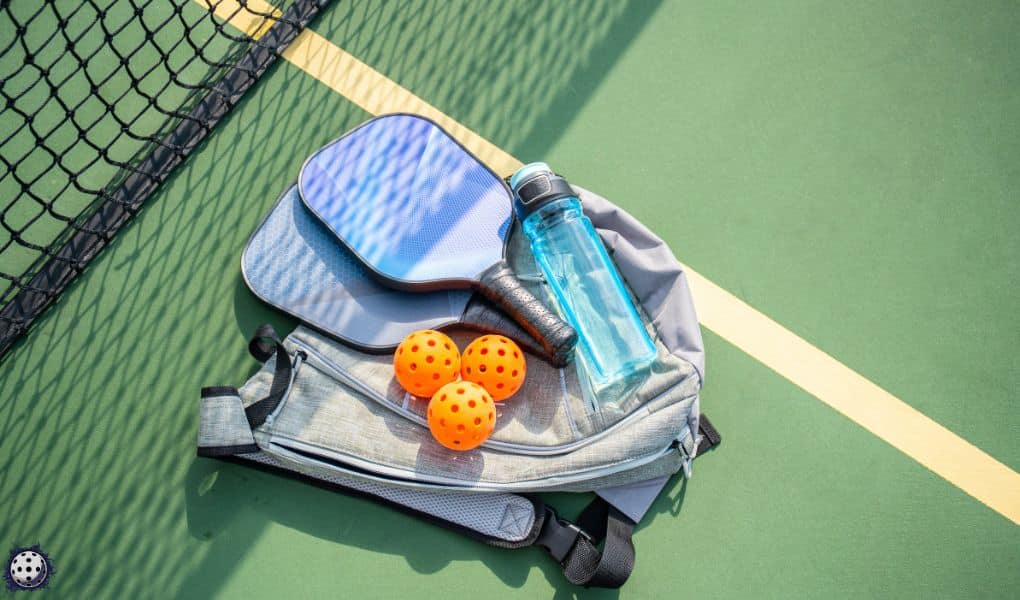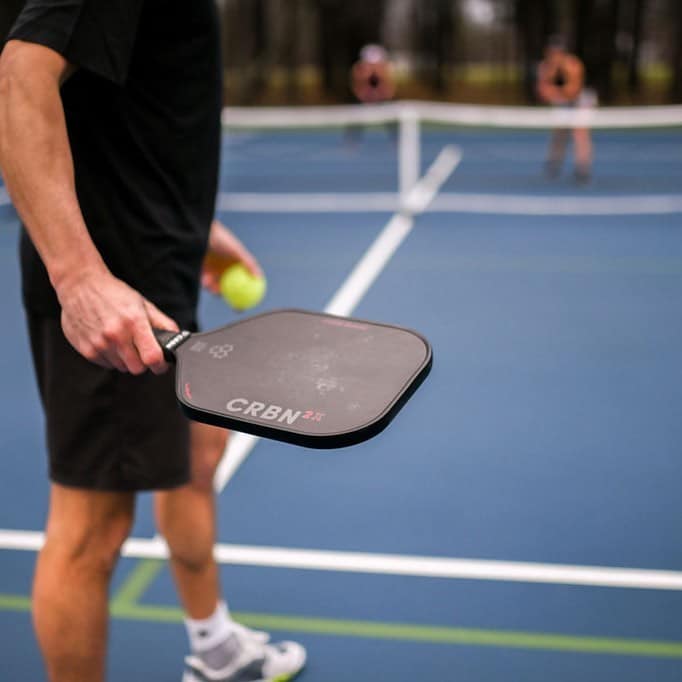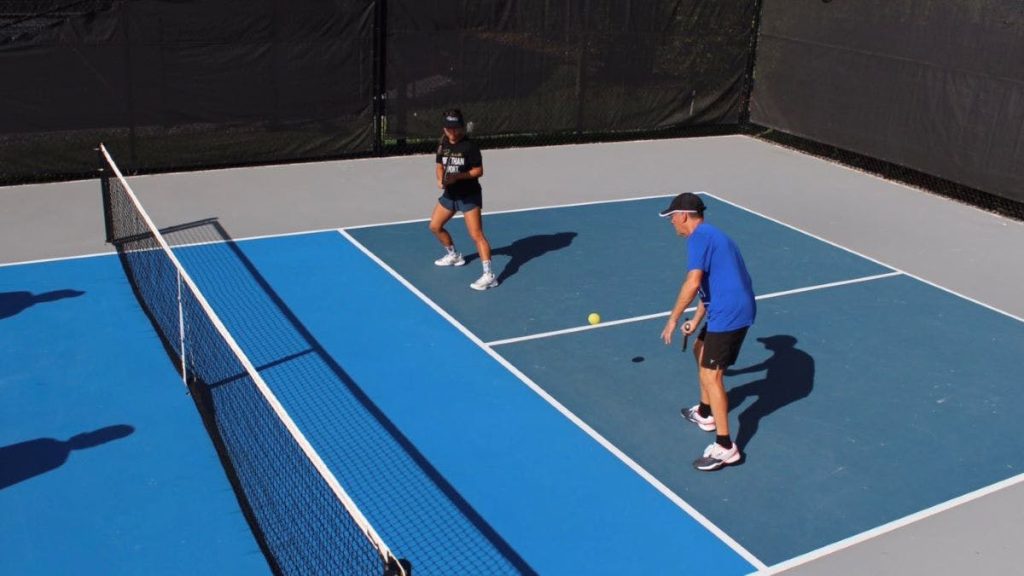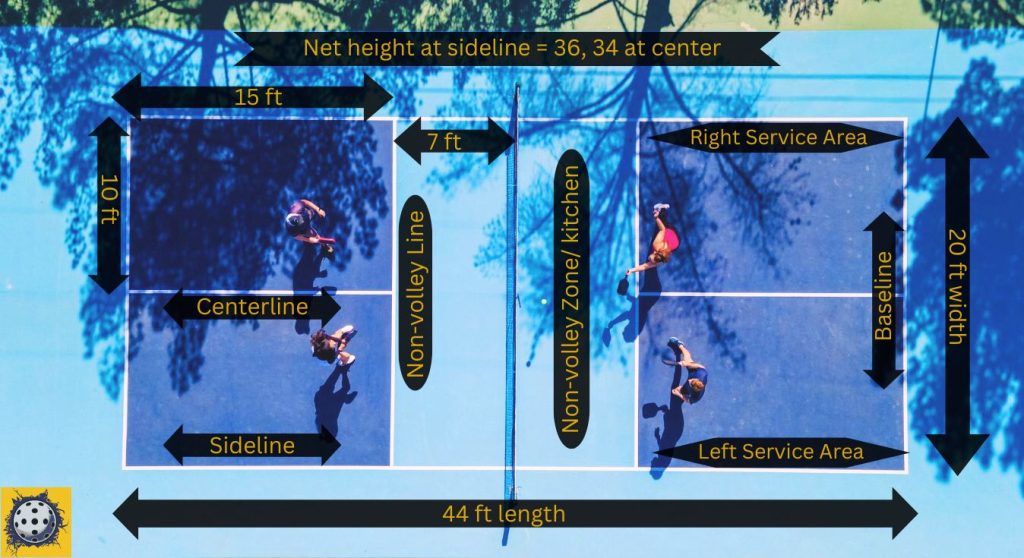Pickleball is a game that’s kind of like tennis, but it’s played on a smaller court with a lower net and a paddle instead of a racket. The ball is also a little bit different – it’s kind of like a wiffle ball. You hit the ball back and forth over the net with your paddle, and the goal is to get it past the other person so they can’t hit it back. It’s a fun game that’s easy to learn and play with friends.
This guide dives deep into the world of pickleball, exploring its origins, gameplay, equipment, and the many reasons why it’s become such a beloved sport.
Everything You Need to Know About Pickleball

A Brief History of Pickleball
Pickleball’s origins are shrouded in a bit of mystery, with a few different stories about its creation circulating. The most widely accepted story claims that pickleball was invented in 1965 on Bainbridge Island, Washington, by three dads – Joel Pritchard, Bill Bell, and Barney McCallum – who were looking for a fun activity to keep their families entertained.
From its humble beginnings, pickleball has grown exponentially. Today, it boasts millions of enthusiasts worldwide, with dedicated courts popping up in parks, community centers, and even backyards.

How Did Pickleball Get Its Name?
There are variations to the tale, but all accounts point to the dads modifying badminton equipment and lowering the net to create a new game suitable for all ages.
The name “pickleball” itself remains unclear, with some attributing it to a neighbor’s dog named Pickles, while others claim it was simply a made-up word that stuck.
Two different stories about how pickleball got its name, but they both involve a dog named Pickles.
Number One: The game was named after Pickles, the family dog of Joel Pritchard, one of the inventors of the game. Pickles would chase the ball and run off with it, so they called the game pickleball.
Number Two: the game was named after the pickle boat, a term used in rowing for a boat with a mixed crew of leftover oarsmen. Joan Pritchard, Joel’s wife, said that pickleball reminded her of the pickle boat because it combined different elements from other sports. Pickles, the dog, was adopted later and was named after the game.
Both stories have some supporters and some critics, but no one knows for sure which one is true. Maybe someday we will find out the real origin of the name pickleball.
Also Check: Is There Really a Golden Rule in Pickleball?
What is Pickleball? A Blend of Paddle Sports
Imagine a game that combines elements of tennis, badminton, and table tennis. That’s the essence of pickleball! Played on a badminton-sized court with a slightly modified tennis net, pickleball uses solid-faced paddles and a perforated plastic ball.

Here’s a breakdown of the key features
Court: 44 feet long by 20 feet wide, with a 7-foot non-volley zone (informally called the “kitchen”) on each side of the net. you can also build a portable pickle court on your backyard or anywhere you want. Learn more about portable pickleball court < here,
Net: 34 inches high at the center and 36 inches at the sidelines. Check portable net to play the game anywhere.
Paddles: Solid-faced paddles made of wood or composite materials, smaller than tennis rackets but larger than ping pong paddles.
Ball: A perforated plastic ball with holes, giving it a distinct bounce compared to a tennis ball.

How to Play Pickleball: Mastering the Basics
Pickleball can be played as singles or doubles. Games typically go to 11 points, with a win requiring a two-point lead.
Here’s a simplified rundown of gameplay:
Serve: The serve is underhand and diagonally aimed into the opponent’s service court.
Double Bounce Rule: The first time the ball is served or returned, it must bounce once on each side of the net before being volleyed (hit in mid-air). This rule applies within the non-volley zone (kitchen).
Volleying: Once the ball has bounced once on each side, players can volley the ball (hit it before it bounces).
Scoring: Only the serving team can score. Points are awarded when the receiving team fails to return a legal serve, commits a fault (like double-faulting or volleying in the kitchen), or hits the ball out of bounds.
Also Check: Pickleball Shots Summary

Pickleball Kitchen/Non-Volley Zone
A unique aspect of pickleball is the non-volley zone on either side of the net, known as the “kitchen.” Volleying (hitting the ball in the air) is not allowed within the kitchen area unless the ball has bounced first.
This rule adds a strategic layer to the game, forcing players to carefully control their shots near the net.
Kitchen Rules
The pickleball kitchen rules are a set of rules that dictate how players can and cannot play the game. The kitchen is the area on the court that is closest to the net and is also known as the non-volley zone.
Here are some of the most important rules,
You cannot be standing in the kitchen zone while hitting the ball in mid-air.
You cannot hit the ball from the kitchen area if it has not bounced once.
If you are in the kitchen or touching the kitchen line when you volley the ball, you commit a fault and lose the point.
It is important to note that anything making contact with this area counts fault, including your paddle, your hat or even if anything falls out of your pocket. Generally this area is known as transition area(No Man’s Land).
Learn Pickleball >> Pickleball Rules Guide | Pickleball 101

Why Is It Called Kitchen?
The term “kitchen” in pickleball is a slang term for the non-volley zone that is the area of the court that is 7 feet from the net on both sides. The origin of this term is not clear but there are several possible explanations. These are some of known theories
Some people say that the term “kitchen” comes from the phrase “everything but the kitchen sink”. It means that players can do anything in this area except volleying the ball.
Some people say that the term “kitchen” comes from the fact that this area is where players usually go to “cook up” or prepare their shots before hitting them.
Some people say that the term “kitchen” comes from the resemblance of this area to a kitchen floor. That is usually tiled and has a line marking the edge.
Some people say that the term “kitchen” comes from the similarity of this area to a kitchen table. It is the area where people often play ping pong or table tennis.
Regardless of the origin, the term “kitchen” has become widely accepted and used by pickleball players of all levels. It is a fun and catchy way to refer to one of the most important and strategic areas of the pickleball court.
Pickleball info – Finding the Right Tournament for You


The Allure of Pickleball: Why It’s So Popular
Pickleball’s appeal lies in its unique blend of elements
Easy to Learn, Fun to Master: The basic rules are straightforward, making it accessible to beginners. Yet, there’s strategic depth and room for skill development that keeps experienced players engaged.
Social and Inclusive: Pickleball is a fantastic social activity. The smaller court size fosters interaction between players, making it a great way to meet new people and have fun.
Great Exercise for All Ages: Pickleball provides a full-body workout that is gentle on joints. This makes it suitable for players of all ages and fitness levels.
Competitive or Casual: Pickleball can be enjoyed competitively or as a casual pastime. Whether you’re aiming for tournament glory or simply looking for a fun way to stay active, pickleball caters to both preferences.

Ready to Give Pickleball a Try?
Pickleball’s welcoming nature and ease of play make it a perfect sport for anyone curious about trying something new. Here’s how to get started:
Find a Court: Many communities have public pickleball courts. Check with your local parks and recreation department or search online for courts near you.
Gear Up: Basic pickleball equipment is readily available at sporting goods stores. You can start with a beginner paddle and some comfortable athletic wear.
Take a Lesson (Optional): While not essential, introductory lessons from a certified pickleball coach can help Contact us
Learn about one of the Fastest Growing Sport in the USA
Pickleball Guide _ Learn to play skinny singles